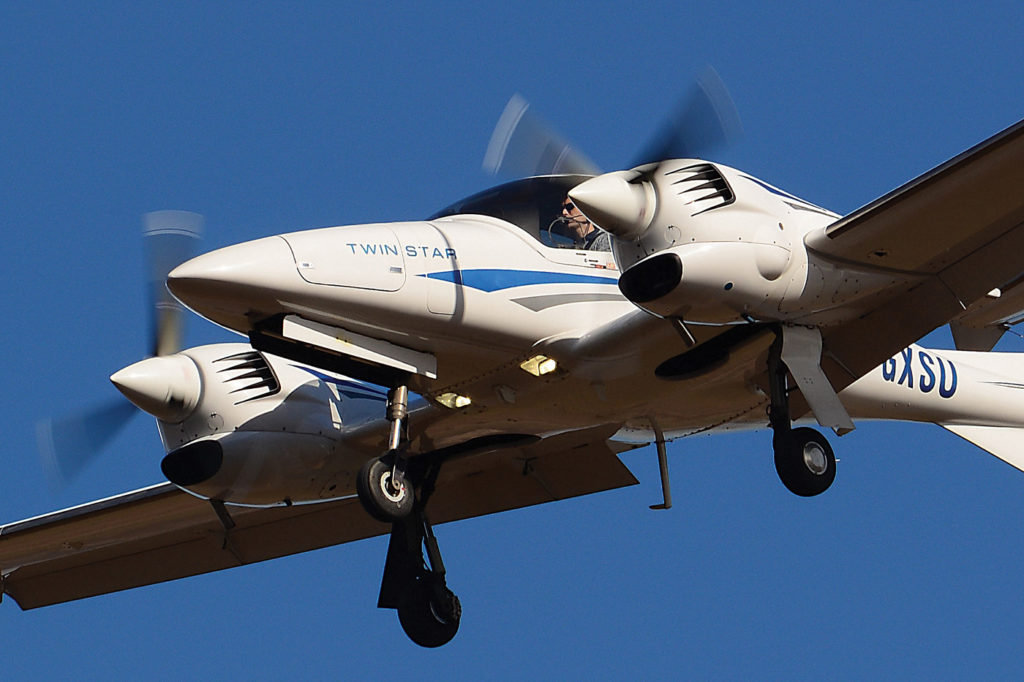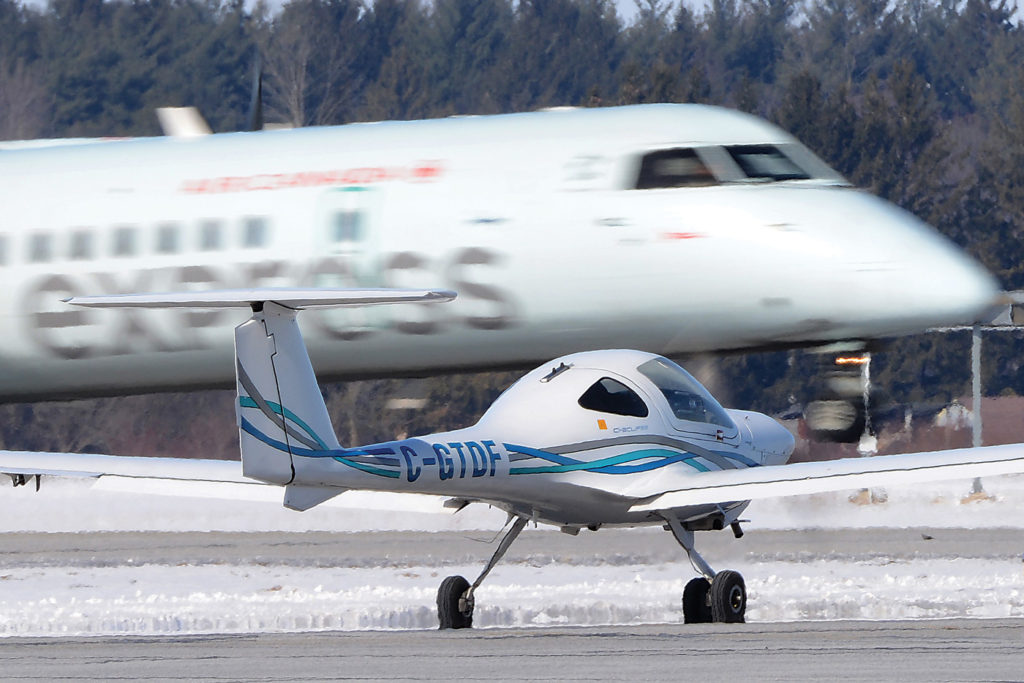Estimated reading time 11 minutes, 13 seconds.
Nav Canada, Canada’s air navigation service provider (ANSP), issued a Notice of Change at the beginning of this year, declaring that it will go ahead with a phased space-based Automatic Dependent Surveillance – Broadcast (ADS-B) Out Performance Requirements Mandate.

The related aeronautical study that Nav Canada conducted through 2018 was submitted to Transport Canada, accepted, and amendments to the Designated Airspace Handbook (DAH) will be made.
Phase 1 (Class A airspace and Class E airspace above FL600) and Phase 2 (Class B airspace) of the mandate were scheduled for implementation in February 2021 and January 2022 respectively. However, on Oct. 24, the Canadian Owners and Pilots Association (COPA) reported that Nav Canada will be delaying the implementation of the first and second phases of the ADS-B Out mandate.
Numerous operators have said they will not be able to meet those deadlines, wrote COPA. In addition, Transport Canada has indicated there is still regulatory work to do before implementation. No new dates have been announced so far.
However, if and when this rolls out as announced, equipping with 1090 MHz extended-squitter (1090ES) transponder-type equipment that supports antenna diversity – in other words, antennas on the top and bottom of the fuselage – will become necessary in certain cases.
COPA reported there is no word yet on how this delay might affect the third phase of the ADS-B Out mandate, which will likely have the biggest impact on Canada’s general aviation (GA) community.
Originally slated for implementation on Jan. 1, 2023, at the earliest, Phase 3 may also require antenna diversity-type avionics to perform adequately for air traffic control surveillance in Class C, D and E airspace. I have written “-type” on purpose, as the new avionics hardware needed might not look like traditional remote box or panel-mount transponders.
Challenge to equip
Canadian GA owners and pilots, and U.S. pilots who fly north of the 49th, could be faced with an upcoming challenge to equip. Nav Canada is now clearly focused only on the Aireon space-based ADS-B system for air traffic surveillance as its path forward. The ANSP is a founding partner of Aireon LLC, the American company that has deployed the only global air traffic surveillance system utilizing satellite-based receivers to monitor aircraft ADS-B Out transmissions.
Aireon only supports the 1090ES MHz ADS-B Out reply frequency format for avionics, the same frequency as traditional Mode A/C/S transponders.
The United States Federal Aviation Administration (FAA) mandate for ADS-B Out equipage continues to track for Jan. 1, 2020, for operations irrespective of registration, in all U.S. airspace where you need a transponder today.
While 1090ES equipment (diversity function not required, and just a bottom stub blade antenna) is acceptable and works for all U.S. airspace, less-complex 978 MHz universal access transceiver (UAT)-frequency equipment (read, cheaper) can be used outside Class A airspace below 18,000 feet.
The 1090ES standard is the only truly global ADS-B Out fit, though; no other countries deploying ADS-B Out have gone down the UAT path to accommodate GA.

Making tracks
Following the release of Nav Canada’s Notice of Change earlier this year, interested groups and individuals started to make their concerns known in no uncertain terms.
U.S.-based Aircraft Owners and Pilots Association (AOPA), the American advocate for general aviation, wrote a letter to Nav Canada in March of this year. That letter stated in part, “We believe that the proposed antenna diversity requirement will have a significant negative impact on Nav Canada’s most cost-sensitive users. As the representatives and advocates of large segments of the Canadian and U.S. aviation industries, we support ADS-B and the efficiency and safety benefits it will provide when it is adopted in a manner that supports general and business aviation on IFR and VFR flights. We do not believe that our concerns, which were voiced during the consultation phase, have been fully considered.”
The letter, endorsed by eight additional supporting advocacy groups, along with a leading avionics manufacturer, also suggested an assumption was made that most of Canada’s general aviation fleet is equipped with Traffic Alert and Collision Avoidance (TCAS II) systems that already require antenna diversity. That’s not the case.
Nav Canada, responding to AOPA later in March and also directly on the issue of antenna diversity, noted, “To apply efficient ATC [air traffic control] separation standards, operational surveillance systems must present a reliable track to the controller. When a track becomes unreliable, by not meeting the required detection rate, the track will “coast” and be removed from the controller’s display. When tracks frequently coast, a non-surveillance separation standard must be applied, adversely affecting efficiency. Analysis conducted to date concludes that tracks associated with ADS-B equipped aircraft that only have a bottom-mounted antenna coast significantly more often than tracks associated with those that have antenna diversity. Data collected in the last few weeks, after all ADS-B equipped satellites were incorporated into the constellation, shows improvement; however, aircraft with only a bottom-mount antenna still do not provide the reliable track required to provide a surveillance service.”
Christine Gervais, Nav Canada manager, level of service, pointed out, “Nav Canada never made any assertion about TCAS II and GA. During consultation, TCAS II was mentioned as it relates to aircraft operating in the Reduced Vertical Separation Minima (RVSM) portion of Class A airspace (Phase 1). There are requirements for aircraft to be equipped with TCAS II depending on their operating environment and some aircraft operating in Class B airspace are also equipped with TCAS II. It was never suggested that GA aircraft are or would be equipped with TCAS II.”
Skies spoke with industry veteran Lee Coulman about concerns he’s expressed.

Coulman has a 25-year background in air traffic control radar systems engineering at Raytheon Canada. He speaks from the perspective of a recreational pilot, and also from his experience working with a group testing an ADS-B ground station to monitor traffic and provide limited weather data at Stratford, Ont.
“I’m upset with the direction Nav Canada is taking [all eggs in the Aireon basket], and specifically $159 million injected into Aireon, which is OK for airliners,” he said. “What I do care about is weather and traffic in the cockpit. They also need to come up with a better way of dealing with bottom-mount antennas only.”
[Nav Canada has no plans to provide the in-flight weather, data and enhanced traffic services available in the U.S. on 978 MHz UAT.]There aren’t a lot of 1090ES equipment options today in a form that are practical, even apart from price, for smaller aircraft.
GA avionics industry leader Garmin did introduce the GTX 335D and GTX 345D in March of this year, two more of their diversity transponders that provide ADS-B Out coverage. The GTX 335D offers ADS-B Out, while the GTX 345D provides ADS-B Out as well as ADS-B In traffic and weather for display on compatible avionics and mobile devices. They need to be connected to a compatible Wide Area Augmentation System/Global Positioning System (WAAS GPS).
L3 has the Lynx NGT-9000 panel mount, which can support diversity.
Ryan McGinn, owner and person responsible for maintenance at Saskatoon Avionics, told Skies that the average cost to install a Garmin GTX 335D in a light single or twin would range anywhere between $10,000 to $12,000.
“The unknown with the diversity system is the mounting of the top antenna, depending on the type of interior, ease of access, etc.; the labour portion can fluctuate,” he said.
“In my opinion, the mandating of a diversity system which differs in any way from the system mandated in the States will have a negative impact on the Canadian aviation industry. This will not only affect general aviation cross-border traffic from the States, but certain business aircraft also.”
McGinn explained that turboprop aircraft such the King Air 200, and older Cessna, Lear and Beechcraft jets under 12,500 pounds, did not typically have a diversity transponder as they were not mandated to have TCAS II or were flown in RVSM airspace.
“These operators, both Canadian and American, who have installed non-diversity equipment to meet the U.S. mandate would have to spend much more to meet the diversity mandate in Canada,” he said.

Another approach
Relatively new to the avionics field, uAvionix has a different idea. The company announced in mid-July that it is developing and testing (in co-operation with Nav Canada) a product called skyBeacon X, a wingtip-mounted 1090 MHz Mode S ADS-B Out transponder designed to meet the update rate performance required when used in conjunction with Aireon.
Like the original (UAT) skyBeacon for the U.S market, skyBeacon X is an LED position light replacement with an integrated 1090 MHz transponder, GPS position source, barometric altimeter, and LED position and anti-collision lights.
uAvionix president Christian Ramsey provided more detail on skyBeacon X.
“We have been building transponders for a number of years,” he said. “The testing we have been conducting with Aireon is not about the performance of the transponder – it’s all about performance with Aireon and what Nav Canada requires for a probability of an update rate.”
Ramsey ventured that uAvionix could have a non-certified version to market by early 2020. He confirmed that the need in Canada is driving this product’s development. When asked to comment on a proposed cost, and concepts for installation – as it less intrusive to the aircraft than a traditional transponder installation – Christian was non-committal.
Pricing information is unavailable at this time, but as for installation, he said: “[In the U.S.] any FAA-licensed airframe and powerplant mechanic with authorization to do inspections (A&P IA), can sign off on the installation. ln the U.S. we have recruited over 700 IAs as installers.”
Carter Mann, director of government affairs and communications at COPA, said, “There is a concern about the proposed mandate (the part about the Class C, D and E airspace) and just whether or not diversity will become a requirement in Phase 3. They (Nav Canada) haven’t demonstrated that diversity is required for smaller GA aircraft. We are still working with them on that. We talk to them regularly.”
Nav Canada’s Gervais did confirm that antenna diversity is required for Phase 1 and 2.
“Phase 3 is still a question; however, diversity will likely be required to meet the performance requirements,” she said. “There are some innovative systems now being tested that show promise, and we welcome the development of new affordable, reliable and certifiable aircraft avionics that can meet the performance requirements for the Aireon surveillance system. Fortunately, we still have more than three years until Phase 3 of the mandate is implemented, so there is potential.”
If Nav Canada does confirm that 1090ES diversity avionics will be a required piece of the puzzle for Phase 3, a change in focus for further lobbying may be indicated.
Aireon is a fait accompli; the investment has been made and there’s no turning back. It may be better time spent to look for a form of rebate or services discount within reasonable bounds, to offset equipment installation costs. It seems a case could be made for that.
Norbert (Norm) Matheis is an avionics and special mission aircraft industry veteran who currently advises clients on business development, marketing and proposal development. Norm holds an AME E licence and can be reached at matheisn@gmail.com.


Nav Canada should improve
Communication of their controllers first .In my opinion,the controllers method of
Communication is not controlled by Nav Canada.There is unnecessary hastiness by the controllers that can lead to accidents. Nav Canada should improve this first.